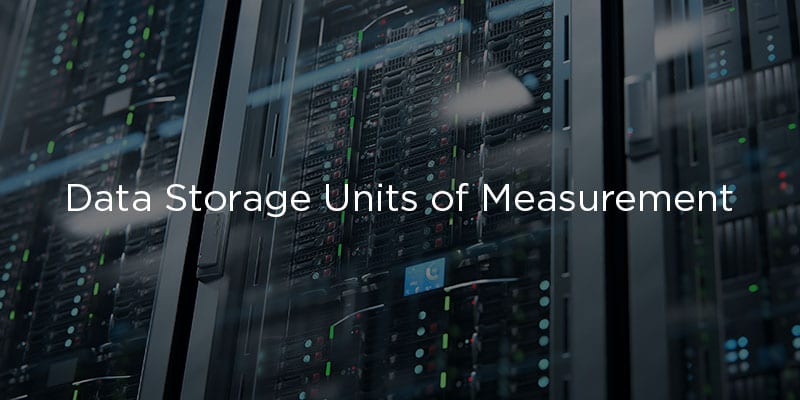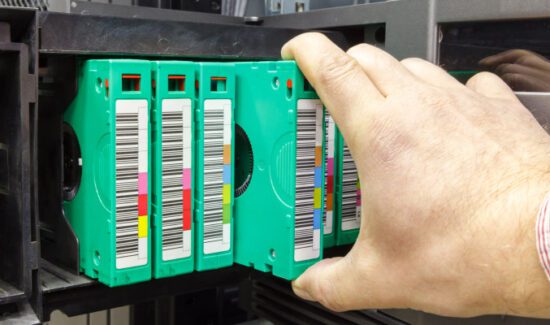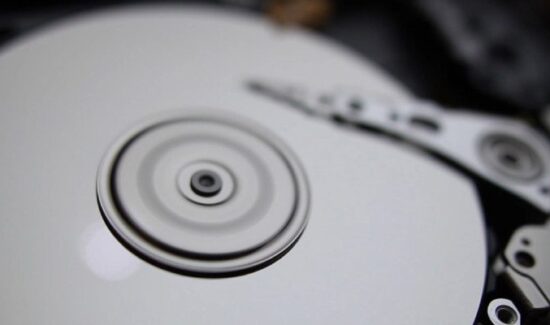Data Storage Units of Measurement Chart from Smallest to Largest

 The editors at Solutions Review explain data storage units of measurement from smallest to largest.
The editors at Solutions Review explain data storage units of measurement from smallest to largest.
When it comes to data storage, it’s important to be realistic about your needs. Are you a smaller business using a simple but versatile solution like DAS? Or is your enterprise considering the benefits of SAN and NAS? Regardless of which solution you end up working with, it all depends on how much data you actually need to store and access. Whether you’re accessing the cloud or a local hard drive, the amount of data that your business interacts with will ultimately determine what type of technology you’re going to need.
It can be easy to get lost in the world of data storage terminology, particularly when discussing data storage units of measurement. What’s the difference between bits and bytes? Megabytes and gigabytes? Terabytes and kilobytes? This resource will help break down these concepts into easily manageable, byte-sized pieces.
Data Storage Units Chart: From Smallest to Largest
| Unit | Shortened | Capacity |
|---|---|---|
| Bit | b | 1 or 0 (on or off) |
| Byte | B | 8 bits |
| Kilobyte | KB | 1024 bytes |
| Megabyte | MB | 1024 kilobytes |
| Gigabyte | GB | 1024 megabytes |
| Terabyte | TB | 1024 gigabytes |
| Petabyte | PB | 1024 terabytes |
| Exabyte | EB | 1024 petabytes |
| Zettabyte | ZB | 1024 exabytes |
| Yottabyte | YB | 1024 zettabytes |
Bits are the basic building blocks of not only data storage, but all computers. Computers work in binary digits, combining 0’s and 1’s in countless patterns. These binary digits are known as bits, and are the smallest possible unit for data storage.
When 8 bits are combined, you get a byte. Bytes are used to store a single character; whether’s it a letter, number, or punctuation. All memory storage is expressed in terms of bytes, so although bits might be the foundation upon which data storage is built, bytes are the building blocks that truly denote the usability of any one storage solution.
Because storage is expressed in terms of bytes, all greater units are typically referred to by their shortened names. This means that you could keep adding more prefixes to talk about more and more data. Above terabyte, we have petabyte (PB), exabyte (EB), zettabyte (ZB), and yottabyte (YB).
Once the numbers get high enough, it can be difficult to realistically visualize how much data we’re talking about. This volume of data is really only relevant to tech giants and massive corporations. But as the need for greater storage increases with the volume of data over time, we will inevitably develop the necessary vocabulary.
So What Kind of Storage Do You Need?
Technology has evolved so rapidly in the past few decades that the biggest hard drives thirty years ago would barely be able to store more than than a couple of modern MP3 files. Today, consumers buying a TB of external hard drive storage for their personal laptops can store 100,000 that amount. Large floppy disks have been replaced by tiny memory cards, USB drives, and a variety of portable storage devices. But the average consumer might not realize that every single day, the world is creating over 2.5 quintillion bytes of data, with most of that data being created in the past few years.
As mentioned above, a bit is the smallest possible data storage unit of measurement. Although storage capacity for enterprises is negligible until we start talking about solutions with massive amounts of storage, small businesses have more freedom. For small businesses, it can be enough to store files, images, or other important documents on CD’s, USB drives, and low-capacity external hard drives. There are also services like Google Drive and Dropbox that let you store files online.
The jump from small business to mid-size and enterprise-level business is a large one, particularly when it comes to data storage needs. It’s important to consider not only budget restraints, but physical limitations as well. Digital storage requires physical servers, hard drives, cables, and other technology that needs to be stored. When your business starts needing to store petabytes, exabytes, or even zettabytes of data, you’re going to need a lot of hardware. It’s big decision to make, and it’s important to weigh the pros and cons of the different methods available to you. There are also options to rely on the resources of other companies and store your data in the cloud.
Picking the Best Data Storage Solution
When it comes to picking a data storage solution, companies can choose from a variety of options, but the most common ones fall into three categories: Direct Attached Storage (DAS), Network Attached Storage (NAS), and Storage Area Network (SAN).
DAS
DAS solutions are typically the simplest and the cheapest. High-capacity backup hard drives, solid state drives, and optical disc drives are all examples of DAS solutions. Because of the relatively cheap price and minimal space obstruction, DAS is a great choice for very small businesses with only a handful of employees. Remote access is usually not possible with DAS.
NAS
Small to mid-size companies have more demanding data storage requirements than small businesses. NAS allows these companies to store data in a centralized location, and can be accessed remotely from various devices on your network. NAS are usually pieces of hardware fitted with multiple hard drives in a RAID configuration, and can be connected to a switch or router on a network via a network interface card. If your business is looking for centralized storage, remote access, file sharing, and scalability, consider utilizing a NAS solution.
SAN
SAN solutions are a good fit for large companies and enterprises that have the space to store multiple disk arrays, switches, and servers. SAN gives access to large blocks of data between servers and storage devices across multiple locations. This solution is a necessity for any large company that needs to reliably and quickly access massive amounts of data. SAN also provides a higher level of data security and is much more fault-tolerant than NAS and DAS.
- Intro to Enterprise Data Storage: What is NAS Storage? - February 25, 2020
- Gartner Names Winners of 2020 Customers’ Choice for Primary Storage - January 27, 2020
- Data Storage Units of Measurement Chart from Smallest to Largest - January 24, 2020






















